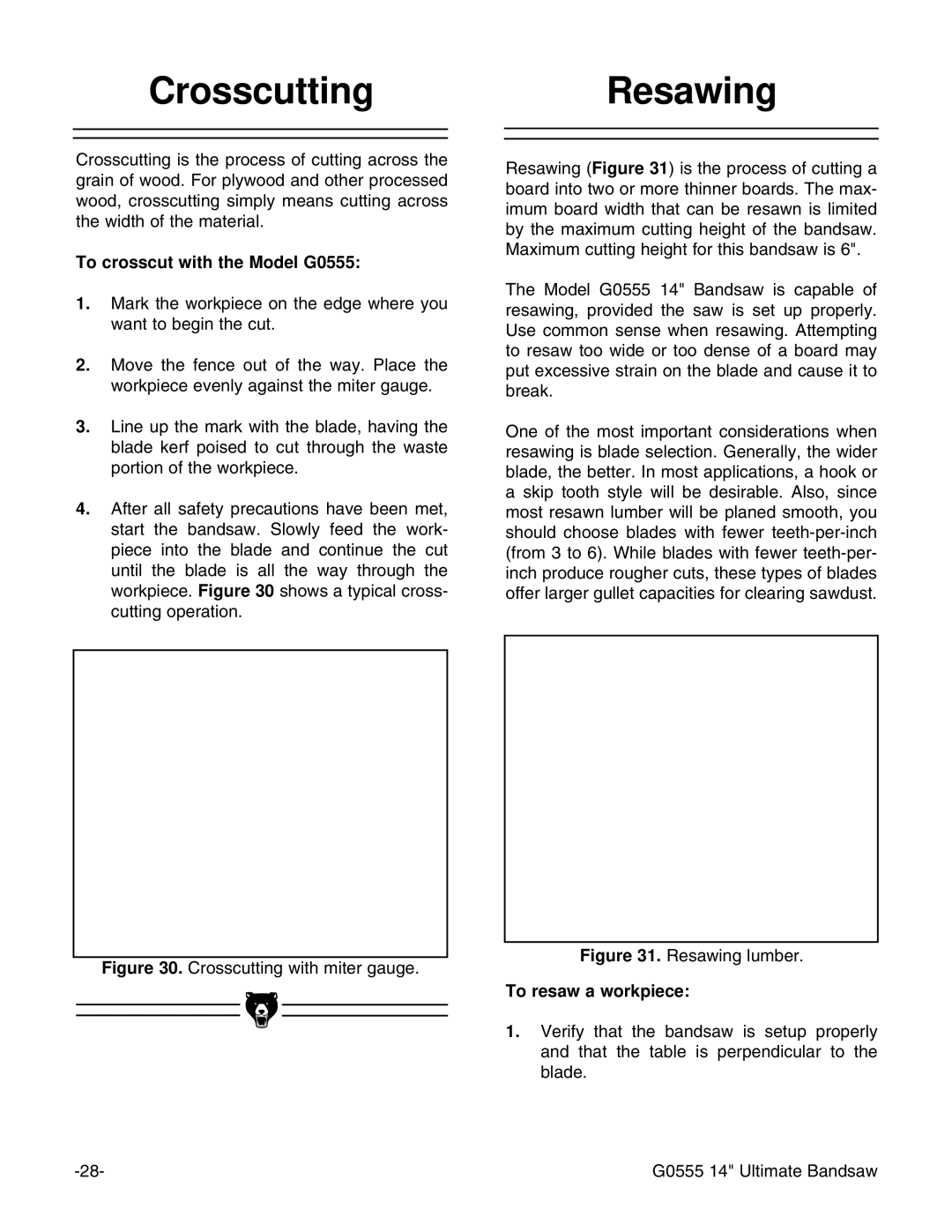
CrosscuttingResawing
Crosscutting is the process of cutting across the grain of wood. For plywood and other processed wood, crosscutting simply means cutting across the width of the material.
To crosscut with the Model G0555:
1.Mark the workpiece on the edge where you want to begin the cut.
2.Move the fence out of the way. Place the workpiece evenly against the miter gauge.
3.Line up the mark with the blade, having the blade kerf poised to cut through the waste portion of the workpiece.
4.After all safety precautions have been met, start the bandsaw. Slowly feed the work- piece into the blade and continue the cut until the blade is all the way through the workpiece. Figure 30 shows a typical cross- cutting operation.
Figure 30. Crosscutting with miter gauge.
Resawing (Figure 31) is the process of cutting a board into two or more thinner boards. The max- imum board width that can be resawn is limited by the maximum cutting height of the bandsaw. Maximum cutting height for this bandsaw is 6".
The Model G0555 14" Bandsaw is capable of resawing, provided the saw is set up properly. Use common sense when resawing. Attempting to resaw too wide or too dense of a board may put excessive strain on the blade and cause it to break.
One of the most important considerations when resawing is blade selection. Generally, the wider blade, the better. In most applications, a hook or a skip tooth style will be desirable. Also, since most resawn lumber will be planed smooth, you should choose blades with fewer teeth-per-inch (from 3 to 6). While blades with fewer teeth-per- inch produce rougher cuts, these types of blades offer larger gullet capacities for clearing sawdust.
Figure 31. Resawing lumber.
To resaw a workpiece:
1.Verify that the bandsaw is setup properly and that the table is perpendicular to the blade.
G0555 14" Ultimate Bandsaw |
